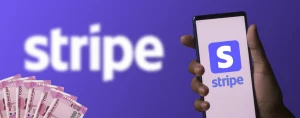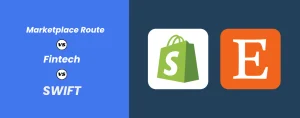Money travels quietly.But every time it crosses a border, someone along the way charges it for passing through.
Sometimes it’s a correspondent bank taking a handling fee.Sometimes it’s a provider adjusting an FX rate by half a percent.Either way, your invoice amount and your landed amount never quite match.
The world calls it transaction cost.
Exporters call it Where did the rest go?
It’s not fraud — it’s design.And understanding that design is the only way to stop losing money inside the pipes that move it.
How Money Moves (and Loses Weight) on the Way Home
When you send or receive an international payment, it usually passes through three layers:
1. The sending bank or platform — where the payment originates (Stripe, Payoneer, Wise, HiWiPay, or a U.S. bank).
2. The correspondent bank(s) — middle institutions that “relay” funds between currencies or regions.
3. The receiving bank — your Indian account, where the funds finally convert to INR.
Each link adds cost.Some show it on paper. Others hide it in math.
The SWIFT System: A Network Built on Middlemen
The SWIFT network doesn’t actually move money — it moves messages.Behind every SWIFT payment, one or more correspondent banks carry out the real transfer.
Each of those banks charges a processing fee, typically $10–$30 per hop, deducted before your payment reaches India.
| Stage | Who Takes It | Typical Fee | How It’s Charged |
|---|---|---|---|
| Sending Bank | U.S. or foreign origin bank | $10–$15 | Outgoing wire fee |
| Correspondent Bank | Intermediary institution | $15–$25 | Deducted mid-route |
| Receiving Bank (India) | Indian AD-I bank | 2–2.5% FX spread | Applied on conversion |
No one is cheating you — they’re just not talking to each other transparently.
By the time the funds land, $1,000 becomes $960–$970, and you won’t know which bank pocketed what.There’s no receipt for invisible arithmetic.
Fintech Providers: The Flat-Fee Generation
Fintech platforms flipped the script.Instead of layering costs across hidden corridors, they charge a flat transaction fee and openly display FX rates.
The difference is philosophy:
Banks charge for distance.
Fintechs charge *for clarity.
| Provider | Fee Model | Visibility | Timeline | FIRC Support |
|---|---|---|---|---|
| Wise | 0.7–1.5% FX margin + small fixed fee | Full | Same day | Manual |
| Payoneer | 2–3% FX markup + flat INR fee | Partial | 1–2 days | 10–15 days |
| HiWiPay | ~0.5% transparent FX + ₹300 flat | Full | <24 hrs | Auto e-FIRC |
| Bank SWIFT | 2–2.5% + $20–$40 intermediary fees | Opaque | 3–5 days | Manual |
Flat-fee pricing doesn’t make transfers “free.”It just removes the guesswork — and the surprise deductions that make bookkeeping feel like detective work.
The Invisible Math Behind Landed INR
Let’s take the same $1,000 example and follow it through each route.
| Route | Declared Fees | Hidden Fees | INR Landed | Total Impact |
|---|---|---|---|---|
| SWIFT (Bank) | $25 outgoing | $15–$25 intermediary + 2% FX spread | ₹83,000–₹83,400 | ~3.5–4% lost |
| Wise | ₹700–₹1,000 total | Negligible | ₹84,500 | ~1.2% lost |
| Payoneer | ₹900 + FX margin | FX baked into rate | ₹83,800–₹84,000 | ~2% lost |
| HiWiPay | ₹300 flat + 0.5% FX | None | ₹85,300 | ~0.8% lost |
(Assuming USD-INR = ₹86.00)
It’s not about small numbers — it’s about repetition.
When you’re exporting $20,000 a month, even a 1% hidden cost is ₹17,000 disappearing quietly into global plumbing.

Why “Correspondent Fees” Still Exist
In fairness, correspondent banks aren’t villains.They’re part of the legacy infrastructure that keeps global trade compliant and traceable.Each one performs due diligence, sanctions screening, and messaging between regions — which costs real money.But for exporters and service providers, those safeguards look like deductions, not protection.
Modern platforms are reengineering that layer — replacing correspondent chains with direct banking partnerships and API-led settlement networks that cut both time and cost.
That’s how fintechs like HiWiPay can move the same $1,000 from New York to Mumbai in 24 hours — with traceability intact and friction reduced to a single, visible fee.
Compliance vs Clarity: The Real Trade-Off
Traditional banking prioritises regulatory safety over user experience.
Fintechs prioritise speed and visibility — but still play by RBI and SWIFT rules.
The balance isn’t to replace banks.It’s to rebuild trust through transparency.
When exporters can see the FX rate, the fee, the timestamp, and the FIRC — they don’t need to choose between compliance and control.They finally get both.
Verdict
Every payment system hides its costs somewhere.Banks hide it in corridors.
Fintechs show it in dashboards.But the smartest exporters aren’t chasing “cheap transfers.”
They’re chasing predictable math.
Because what ruins a business isn’t one high fee — it’s a thousand invisible ones.

In Summary — The HiWiPay Way
You can’t remove every middleman.But you can choose which ones you pay.
HiWiPay replaces hidden correspondent fees with one clear price, one live FX rate, and one-day settlement — fully RBI-compliant and traceable.Because in global payments, the smartest route isn’t the shortest, it’s the one where nothing gets lost on the way home.



